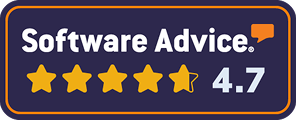You might have heard of product design tools, such as Figma or Adobe XD.
If you have worked with startups or businesses, you must know the significance of product design and the process of bringing ideas to life. If you are a consumer, it is important for you to understand a complex process that has led you to experience a full-fledged product.
Product design refers to using creativity to solve customer problems. It is the process of developing products that meet customer needs by defining user requirements and customers’ pain points and then finding creative solutions to solve these problems.
Product design includes a wide range of activities, such as market research, prototyping, designing the user experience and interface, user testing, and engineering. As complex as it sounds, the end goal of this entire process is really simple: Happy Customers!
Product Design is based on Design Thinking which is the key to bringing creativity while solving difficult problems. The Stanford Hasso-Plattner Institute’s 5 steps in design thinking have helped big names like Google, Airbnb, and IBM in innovating strategies that make things easy, simple, and beautiful for their customers.
So, let’s quickly learn these 5 steps as well as the design tools for each stage that helps us in building a product from ideation to launch!
*There are tons of product design tools out there for you to explore and sometimes these tools overlap in more than one stage.
5 Step Design Thinking Process + Product Design Tools to Get You Started
1. Empathise
In this stage, you try to understand your customers by getting close to them and getting the answer to two questions i) who are they? ii) what do they want? Once that is done, focus on the problems that need to be solved. If you need more information on how this can be done, you can explore the Jobs To Be Done (JTBD) Framework. Observing user behavior, through focus groups, and lab testing plays an important role in this stage.
But the bigger challenge as a product designer is how do you build real empathy.
Building real empathy means going beyond the usual behavioral observations to try to understand what the customers think and feel. It means talking to the customer as much as possible, and carrying out user interviews, surveys, and feedback forms. Try living your customer’s experience.
Tool: Hotjar

Hotjar is a product design tool that has heat maps and recording features. It tells how users are clicking, where they are clicking the most, and where they are clicking the least. Hotjar also includes surveys and feedback forms to directly hear from the customers. This tool is extremely useful in the empathize stage.
2. Define
You have tried to build a relationship with your customers to understand them and their needs. Now it is time to use those insights and perform some actions based on them. Remember these insights are powerful and can be used to define a clear problem statement that revolves around your customer needs.
Tool: Miro

Miro is an incredible product design tool that makes it easy to brainstorm and collaborate with your team members.
3. Ideate
Since you have spent a good amount of time understanding the problem. It is now time to start generating ideas for solutions.
By now, you have already gone through the Empathy and Define phases. Now you have more specific problems to deal with so try to go crazy with throwing out as many ideas as possible to spark creativity in the team. This will inspire creativity and automatically help the team come up with the best solutions.
Do not discard any ideas at the beginning of the ideation process, welcome them all. So you can narrow down the best possible solutions.
Tool: Figma

Figma is a powerful product design tool that helps you design anything from websites to applications to logos and much more.Learning Figma helps you take your first steps in the world of User Interface (UI) Design and User Experience (UX) Design, which are core components of a successful UX design agency's workflow.
4. Prototype
In this stage, you turn ideas into testable prototypes as soon as possible. Once your solutions are defined, you should start producing minimal viable products (MVP) so that these solutions can be implemented.
Tool: ProtoPie

ProtoPie is the easiest product design tool to turn your interactive design ideas into more realistic prototypes. The reason most UI/UX designers prefer it in the prototyping phase is that it allows you to create realistic, dynamic prototypes for multistate scenarios.
5. Test
The last step in the design thinking process is testing your prototype with real or potential users. You shouldn’t invest in new designs or products if you haven’t tested their effectiveness.
Testing will help you be mindful of your resources as well as help you stay determined to reach your goal which is a satisfied customer. You can run usability tests, A/B tests, and split tests with focus groups of selected users.
Tool: Google Optimize

Google Optimize is an experimentation product design tool that helps create A/B and multivariate tests.
While we have put together some product design tools for each stage for your ease, please know that there are countless other tools. Some of the tools also overlap while being used in more than one stage.
Remember the end goal of going through these arduous processes in Product Design is a happy customer and a product that helps them feel at ease. If you wish to bring innovation through Product Design or pursue a career in Product Design, start working on real-life case studies, product design tools, and projects to understand users’ needs and stay up to date with new trends in product design.







.webp)





